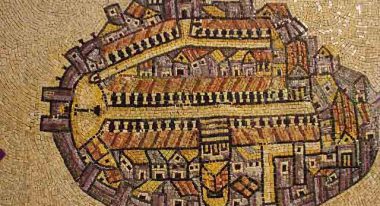
Holy Water Guide: Customs, History, And Bible Sources
Holy Water
Holy water is water that has been blessed, that is, set aside for spiritual use, by a cleric. Predominantly a Roman Catholic sacramental (little sacrament) and the blessing is done by a priest or bishop. This sacrament can be found in Roman Catholic and Orthodox Christianity but has also spread to other denominations as well.
Christians do not believe the water is in any way magical, the power comes from the blessing, not the water itself.
Holy Water is used mainly in the sacrament of baptism which includes holy water being poured on the recipient’s head. Holy water can also kept in a Baptistery, or smaller font, called a stoup which is placed near the entrance to the church.
Traditionally people dip their fingertips into the water and make the Sign of the Cross to bless themselves and serve as a reminder of their baptism at birth. Holy water is also sometimes sprinkled upon the congregation during the Mass; this is called aspersion. It can also be sprinkled on people or items when they are blessed, as part of the prayers of blessing. For instance, in Alaska, the fishing boats are sprinkled with holy water at the start of the fishing season as the priest prays for the crews’ safety and success.
The use of holy water is based on the story of Jesus’ baptism by John the Baptist in the River Jordan and the Orthodox interpretation of this event. In this view, John’s baptism was a baptism of repentance, and the people came to have their sins washed away by the water. Since Jesus had no sin, but was God himself, his baptism had the effect of Jesus blessing the water, making it holy, that is used fully for its original created purpose to be an instrument of life. Jesus’ baptism is commemorated in the Orthodox Church at the Feast of Theophany (literally “God shining forth”) on January 6.
“It came to pass in those days that Jesus came from Nazareth of Galilee, and was baptized by John in the Jordan. And immediately, coming up from the water, He saw the heavens parting and the Spirit descending upon Him like a dove. Then a voice came from heaven, “You are My beloved Son, in whom I am well pleased.” Mark 1:9-11
Thousands of Visitors to the Holy Land, follow in the footsteps of Jesus by partaking in the Sacrament of Baptism.
History of Holy Water Use
A document known as the Apostolic Constitutions, written around the year 375 AD, attributes the first use of holy water to St. Matthew the Apostle.
Holy water was originally used in baptisms but Gregory of Tour (c538-594) taught that God could work miracles such as healings through the use of holy water. This belief spread through the church. As a result churches began to make a container available near the entrance where believers could obtain some for personal use at home.
St. Teresa of Avila believed that holy water could be successfully used to repel evil and temptations. She wrote, “I know by frequent experience that there is nothing which puts the devils to flight like Holy water.”
Modern-Day Use
Holy water is used to wash the priest’s hands during the Mass. Once used it must be disposed of properly. It is not just dumped; there is a special basin with a hinged lid to distinguish it from a regular sink, which leads directly into the ground.
Often parishioners will bring holy water home with them and put some in small fonts hung at their door. Many Churches have special dispensers to provide their congregation with Holy water for this specific purpose.
The ritual of consecrating holy water traditionally is performed on Holy Saturday and during the vigil of Pentecost.
Biblical Basis for Holy Water
In Exodus 14 God delivered His people by use of the water of the Red (or Reed) Sea. Although Moses did not bless this water, it could be considered blessed by virtue or God’s parting of it.
In John 7:37-39 Jesus speaks of Living Water available to those who believe in Him. The water symbolized the Holy Spirit.
Reference:






